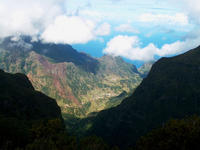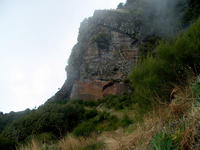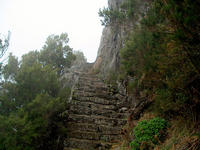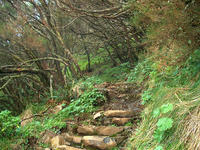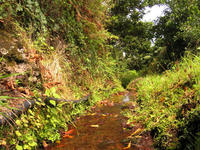You are in: Europe -> Portugal -> Laurisilva of Madeira, and traditional search or Image Gallery will yield results of this site only
Laurisilva of Madeira
| Site number: | 934 |
|
| Type of site: | Natural | |
| Date: | 22,000-10,000BC | |
| Date of Inscription: | 1999 | |
| Location: | Europe, Portugal, Island of Madeira | |
Up to 75 images are shown here. Click on each for more details or on Image Gallery for more images.
| Description: | An exceptional relict of a formerly widespread laurel forest type, the Laurisilva of Madeira is the biggest surviving laurel forest area and is assumed to be 90% primary forest. It holds a unique plant and animal suite, with countless endemic species such as the Madeiran long-toed pigeon. --WHMNet paraphrase from the description at WHC Site, where additional information is available. | |
| Laurisilva or laurissilva ("laurel forest") is an endemic type of humid subtropical laurel forest found on several of the Macaronesian islands of the North Atlantic, namely Madeira Islands, the Azores and the Canary Islands, a precious relic of the Pliocene subtropical forests. The forests are made up of laurel-leaved evergreen hardwood trees, reaching up to 40 meters in height. Many of the species are endemic to the islands, and harbor a rich biota of understory plants, invertebrates, and birds and bats, including a number of endemic species. Laurisilva formerly covered much of the Azores and Madeira and parts of the western Canary Islands, but the forests have been much reduced in extent by logging, clearance for agriculture and grazing, and the invasion of exotic species. The most extensive laurisilva forests remain on Madeira, where they are found between 300 and 1400 meters altitude in the northern slope, and 700-1600 meters altitude in southern slope, and cover 149,5 km². In the Canary Islands, roughly 60 km² of laurisilva remain on Tenerife and over 20 km² in Garajonay National Park on La Gomera, and small areas on La Palma and Gran Canaria. In the Azores, small patches of laurisilva forest remain on the islands of Pico, Terceira, and São Miguel. The Madeira laurisilva forests were declared a UNESCO World Heritage Site in 1999. Predominant lauraceous trees include Til (Ocotea foetens), Loureiro (Laurus novocanariensis), Vinhático (Persea indica), a valuable hardwood, and Barbosano (Apollonias barbujana); other important trees include Aderno (Heberdenia excelsa), Pau Branco (Picconia excelsa), the Mocanos (Visnea mocanera and Pittosporum coriaceum), and Sanguinho (Rhamnus glandulosa), and the small trees or large shrubs Folhado (Clethra arborea) and Perado (Ilex perado). The forests support a diverse understory of ferns and herbaceous plants, including the Leitugas (Sonchus spp.), geraniums (Geranium maderense, G. palmatum and G. rubescens), the Estreleiras (Argyranthemum spp.) and the endemic orchid Goodyera macrophylla. --Wikipedia. Text is available under the Creative Commons Attribution-ShareAlike License. | ||
| Source: | http://whc.unesco.org/en/list/934 | |
| Reference: | 1. UNESCO World Heritage Center, Site Page. | |







